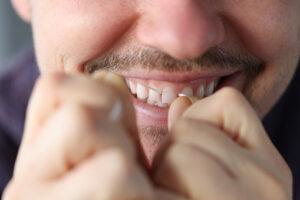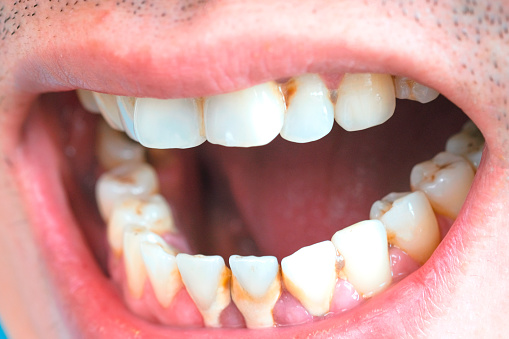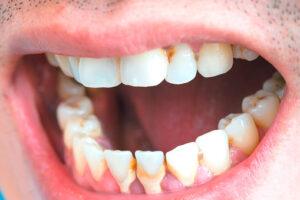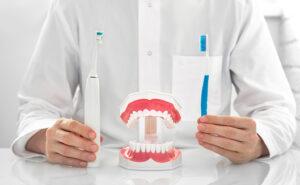We spend a lot of time thinking and taking care of our teeth. Meanwhile, we ignore the reasons for brushing at first. Your gums are an important part of your mouth. It constitutes what makes good dental health and hygiene. Besides, the role they play goes beyond simple oral health in today’s world. That way, we will explore the differences between healthy gum vs. Unhealthy gum.
However, several studies have shown links between healthy gums vs. unhealthy gums. While one supports the teeth to stay firmly rooted in the mouth, others don’t. So, we seek expert guidance on the right method to use. With research, we found that gum diseases have significant consequences to teeth.
So, it’s better to keep an eye out for any red flags in this article. By doing this, you can get rid of unhealthy gum that would affect your teeth in the long run. Remember, gum disease is not often spoken about, but it’s quite prevalent in today’s world. And if you’ve had one, it’s high time you find a solution.
Have you been surfing the internet to get the right source of information regarding healthy gums vs. unhealthy gums? Search no further as you’ve landed on the right platform. Practicing good oral hygiene is one of the important actions you can take to prevent diseases. Does that sound interesting?
Yes! In this article, we will walk you through the five warning signs of gum disease. Aside from that, we have compiled the ways to keep the gum healthy. To keen further, our explanation goes beyond the differences between healthy gums vs. Unhealthy gums as we also talked about the risk factor to avoid in gum disease.

Regular Signs of Gum Disease
Oftentimes, gum disease starts with mild symptoms, and you should be aware of that. The bacteria in the plaque can also trigger an inflammatory response, thereby leading to unhealthy gum. Notwithstanding, people may notice the following signs and symptoms as the gum disease progresses.
- Noticing Bleeding Gum – Your gum should not bleed, and whenever it starts to bleed, it’s a sign of gum disease. Moreover, it is likely due to bacteria that buildup in the gum line, causing gingivitis. Therefore, be sure to visit your dentist if you’re noticing blood in your gums when you floss.
- Noticing Receding Gums – When you notice that your teeth are starting to look longer, that’s a sign of receding gum. Besides, it may mean that your gums are beginning to pull away from the base of your teeth. So, when this occurs, be sure that it’s caused by a bacteria infection that destroys gum tissue.
- Halitosis Bad Breath –Bad breath has always been one of the major causes of gum disease. Moreover, the odor-causing bacteria in the mouth can multiply and reproduce in unhealthy gums. Therefore, whenever you perceive that you have bad breath or bad taste, it’s a gum disease sign.
- Dental Tooth Sensitivity – Many things could cause tooth sensitivity. At the same time, it can also be a result of gum disease. This is because chronically inflamed gum can expose your teeth. In the long run, this can affect the tooth; that’s why you need to treat it with care.
- Swollen or Painful Gum – If you noticed that your gums are inflamed or painful, you have gum disease. In fact, it may sometimes swell when the gums are causing infection and bacteria. So, it’s crucial to visit the dentist if you’re experiencing any of the signs mentioned above.
7 Ways To Keep the Gum Healthy
Adopting the following habits will make you have a healthy tooth. Also, it prevents you from having gum disease now and in the future. Besides, a marvelous mouth takes more than squeezing paste. So, think about how you can improve your brushing technique. Without further ado, below are the seven ways to keep the gum healthy.
- Purchase the Right Toothpaste
Purchasing the right toothpaste is one of the crucial things to consider having healthy gum. Also, ensure that the toothpaste contains fluoride and other ingredients to keep the teeth clean and healthy. Aside from that, know whether you need the one for sensitive teeth, teeth whitening, and more.
2. Brush Your Teeth Properly
By brushing your teeth properly, you’re keen on having healthy gum. According to the American Dental Association (ADA), the following should be put in place to help keep the gums healthy.
- Brush your teeth at least twice a day with the right toothpaste
- Replace old toothbrush after 3-4 months
- Press gently and brush the teeth at a 45-degree angle to the gums
- Clean the inside of the front teeth by turning your brush vertical and not horizontal
- Pick the right toothbrush
3. Rinse Your Mouth Gently
We all rinse our mouths after brushing the teeth. Interesting! But, the question is, how often and how long do we rinse the mouth? Meanwhile, oral hygiene practices should always contribute to what makes a good mouth odor. So, make sure you wash the fluoride products away after brushing.
4. Apply Mouthwash
According to the ADA, there are two types of mouthwash today. The first one is therapeutic, while the other one is the cosmetic product. Besides, don’t use mouthwash as a replacement for brushing. Use therapeutic effects to reduce the amount of plaque, remove food particles, and prevent gum diseases.
5. Visit Your Dentist for Checkups
To keep your gum healthy, you have to get regular dental checkups. They include professional cleaning as it’s the only way to remove plaque and tartar from the teeth. With the regular visit, the dentist can prescribe what to use to prevent unhealthy teeth. Moreover, early detection can reduce painfulness.
6. Quit Smoking
From the research made by the Centers for Disease Control and Prevention (CDC), smoking can cause damage to your teeth. In fact, it weakens the immune system and makes you susceptible to gum disease. So, we recommend you stop smoking to reduce the risk of having unhealthy gum in the long run.
7. Don’t Neglect Daily Flossing
Flossing is one of the things that people neglect when it comes to oral hygiene. ADA recognizes this fact and emphasizes flossing as it helps to remove gum disease. Not only that, but it also removes plaque from the teeth and gum. Therefore, to avoid building bacteria, floss daily to maintain proper hygiene.
Healthy Gums vs. Unhealthy Gums
If you have healthy gum, they must not look red and swollen but instead pink and firm. Maintaining a healthy gum requires brushing twice a day, rinsing with an antiseptic mouthwash, and seeing your dentist regularly. However, if your gum is healthy, it will definitely look firm and pink, including redness.
As said above, nutritional deficiencies, crooked teeth, and hormonal shifts may cause unhealthy gum. To avoid such a problem, take several actions to prevent gum disease. Mouthwash has the power to kill germs and also reduce more than 52 percent of plaque than bruising and flossing alone every day.
Furthermore, your oral health is essential as it maintains solid and healthy gum. Certain habits are beneficial to avoid mouth odor, so embrace the method as stated in this article. Below are the ways to identify risk factors for gum disease.
- Genetics and stress
- Medications and oral contraceptives
- Clenching or teeth grinding can put excess force on supporting tissues
- Obesity and malnutrition
- Mouth-body-connection and diabetes
Right Time to See a Dentist
You can see a dentist when you experience bleeding or pain for more than a week. Since swollen and red gums are easily recognized as gum disease symptoms, you should be wary of this fact. Before you know that it’s high time you need to visit the dentist, below are the things to look out for.
- Check whether you’ve started developing sensitive teeth
- When the gums bleed easily, it’s time to see the dentist
- When your teeth feel loose in the mouth
- If the dentures no longer fit correctly, you can visit the dentist
- When gum pull back from the teeth, visit the dentist
How to Strengthen Gums Naturally
Surprisingly, there are different ways to strengthen gum naturally without visiting the dentist. Would you love to know the food for healthy gum and other natural ways? Does that sound like YES? Here are some of the things to strengthen the gum naturally.
- Try ginger root in a stir fry to promote healthy teeth and gums
- Consume fibrous vegetables that’ll destroy harmful bacteria to keep gums free of plaque
- Consider concentrated calcium content, and sugar-free yogurt, and milk
- Encourage yourself or your child to eat an apple for healthy teeth
Bottom Line
A great smile starts with healthy gum. From our innovative dental care, the above explanations are the best way to get proper oral dental hygiene. If you’re interested in learning more about healthy living, follow this platform for more updates. We’ll be happy to have you back regarding the health of your gums.



